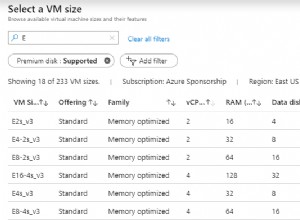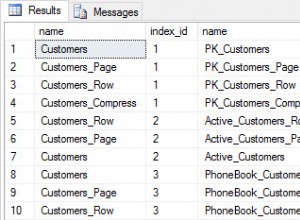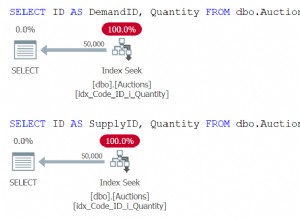Możesz przypisać parametr grupowania, licząc liczbę done rekordy przed każdym rekordem. Reszta to tylko agregacja, chociaż przypisanie litery do każdej grupy wydaje się niepotrzebną komplikacją:
select grp as record, min(Date) as DateBegin,
max(case when Action = 'Done' then Date end) as DateEnd,
count(*) as NumActions,
sum(case when Action = 'Escalation' then 1 else 0 end) as NumEscalations
from (select e.*, coalesce(e2.grp, 0) as grp
from example e outer apply
(select count(*) as grp
from example e2
where e2.id < e.id and e2.Action = 'Done'
) e2
) e
group by grp;
To zapytanie byłoby prostsze (i wydajniejsze) w SQL Server 2012+, który obsługuje sumy skumulowane.
EDYCJA:
Zauważyłem, że używam do tego podzapytania, ale nie jest to konieczne. Można to zapisać jako:
select coalesce(grp, 0) as record, min(Date) as DateBegin,
max(case when Action = 'Done' then Date end) as DateEnd,
count(*) as NumActions,
sum(case when Action = 'Escalation' then 1 else 0 end) as NumEscalations
from example e outer apply
(select count(*) as grp
from example e2
where e2.id < e.id and e2.Action = 'Done'
) e2
group by e2.grp




